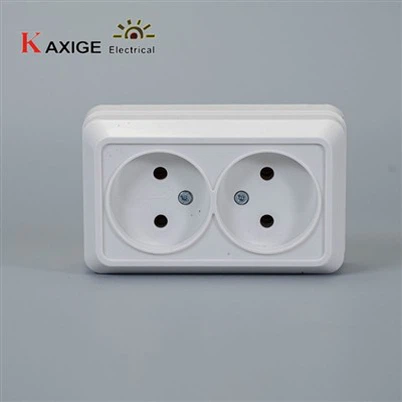What is the difference between European and American male plugs?
Leave a message
Yo, what's up guys! As a supplier of male plugs, I've been in the game for quite a while. One question that I often get asked is, "What's the difference between European and American male plugs?" Well, that's what I'm gonna break down for you in this blog post.
Physical Design
Let's start with the physical appearance. American male plugs typically have two flat parallel pins, and sometimes a third round grounding pin. It's a pretty simple and straightforward design. You've probably seen these plugs all over the place if you're in the States or have traveled there. The two - pronged ones are used for non - grounded appliances, while the three - pronged ones are for those that need grounding for safety reasons.
On the other hand, European male plugs come in a few different types, but the most common one is the Type C plug. It has two round pins. This design is used in many European countries. There's also the Type F plug, which has two round pins and two little clips on the sides for grounding. The Type C plug is super common and is often used for low - power devices.
The difference in the shape of the pins is a big deal. American appliances with their flat pins won't fit into European sockets, and vice versa. You can't just take your American - made laptop charger with its flat pins and expect it to work in a European socket. That's why when you travel, you often need to bring an adapter.
Voltage and Frequency
Another major difference lies in the voltage and frequency. In the United States, the standard voltage is around 120 volts, and the frequency is 60 Hz. This means that most American electrical appliances are designed to work at this voltage and frequency.
In Europe, the standard voltage is 230 volts, and the frequency is 50 Hz. European appliances are built to operate at these specifications. If you plug an American appliance that's designed for 120 volts into a European 230 - volt socket without a voltage converter, you're likely to fry the appliance. It's like giving a small engine too much fuel; it just can't handle it.
This difference in voltage and frequency also affects the design of the male plugs and the electrical systems in general. European plugs and sockets are designed to handle the higher voltage and different frequency. They need to be more robust to ensure safety and proper functioning.
Safety Features
Safety is a top priority when it comes to electrical devices, and the male plugs in Europe and America have different safety features.
In the United States, the grounding pin in three - pronged plugs is a crucial safety feature. It provides a path for electrical current to flow into the ground in case of a short - circuit or other electrical fault. This helps prevent electric shocks to the user.
European plugs also have their own safety mechanisms. For example, the Type F plug with its grounding clips provides a reliable connection to the grounding system in the socket. The design of European sockets often has shutters that prevent accidental contact with the live parts of the socket when the plug is not inserted.


Compatibility and Usage
When it comes to compatibility, as I mentioned earlier, American and European male plugs are not directly compatible. If you're an American traveling to Europe, you'll need to bring adapters. But it's not just about the shape of the plug. You also need to consider the voltage and frequency.
Some modern appliances, like laptops and smartphones, are designed to work with a wide range of voltages (usually from 100 - 240 volts). These devices can be used in both American and European sockets with just an adapter. However, other appliances like hair dryers, toasters, and some kitchen appliances are often designed for a specific voltage and frequency and may require a voltage converter in addition to an adapter.
As a male plug supplier, I offer a variety of products to meet different needs. For example, our 8532 Plug is designed with high - quality materials to ensure safety and durability. It's suitable for a range of applications and can be customized to meet specific requirements.
Our 8526 Plug is another popular option. It has been tested to meet international safety standards and is a great choice for both American and European markets. We can also provide adapters and voltage converters to make your life easier when dealing with different electrical systems.
And if you're looking for a plug with specific features, our 8540 Plug might be the one for you. It's designed to handle high - power applications and has advanced safety features.
Why Choose Our Male Plugs
We understand that when you're buying male plugs, you want quality, safety, and reliability. Our products are made from the best materials available. We use high - grade plastics and metals to ensure that our plugs can withstand the rigors of daily use.
Our manufacturing process is highly regulated, and we conduct strict quality control checks at every stage. This means that you can trust our plugs to work properly and safely. Whether you're an electrical contractor, a manufacturer, or an individual looking for a replacement plug, we've got you covered.
Let's Do Business
If you're in the market for male plugs, whether it's for American or European applications, I'd love to talk to you. We can discuss your specific needs, and I can provide you with a quote. We offer competitive prices and excellent customer service. Don't hesitate to reach out and start a conversation. We're here to help you find the perfect male plugs for your requirements.
References
- Electrical Safety Standards in the United States, National Electrical Code
- European Electrical Installation Requirements, IEC Standards
- Traveler's Guide to Electrical Adapters and Converters, Various Travel Publications






